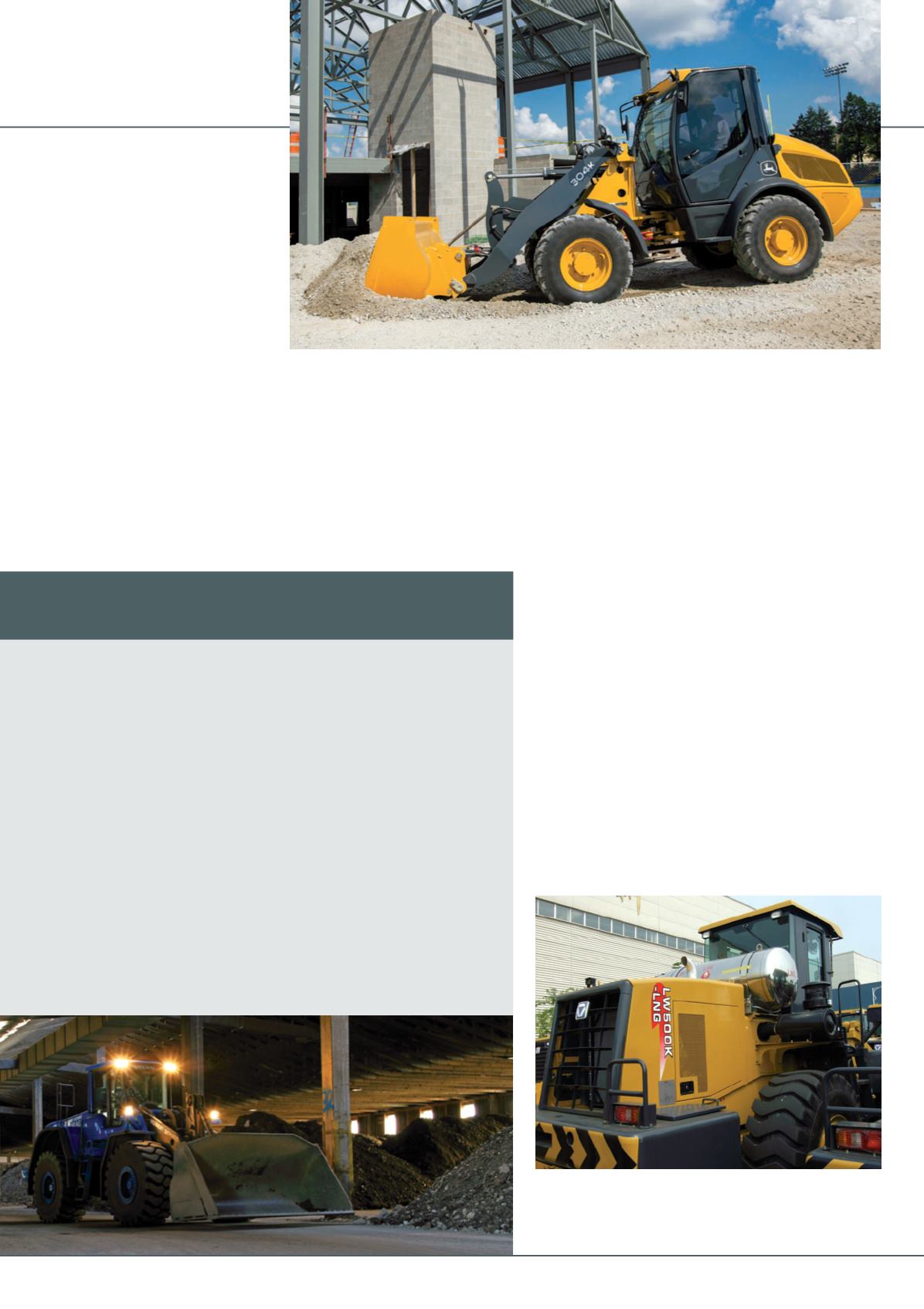
international
construction
september 2013
WHEELED LOADERS
42
Common goals
which have rated engine powers of
143 kW and 263 kW respectively. The
WA380-7 would tend to be fitted with a
bucket around 3.2 m
3
capacity, while the
WA500-7 is up in the 5.5 m
3
class.
Both are for highly regulated markets, with their Tier 4
Interim/Stage IIIB engines, and are supported by Komatsu Care,
a complementary maintenance programme for all Komatsu
machines with this type of engine that covers the first three
years of 2,000 hours, incorporating work by Komatsu-trained
technicians using genuine parts.
Also included are two complementary exchanges of the DPF
and a warranty on the first DPF for five years of 9,000 hours.
The Komtrax telematics system is standard, and this uses a
secure website to feedback key information such as operating
hours, fuel consumption, location, cautions and maintenance
alerts to machine owners. It also now features details about the
type of work the machine is doing, engine performance and the
status of the DPF.
High capacity lock-up torque converters are standard and
these are said to improve hill climbing and acceleration, while
delivering a higher top speed and lower fuel consumption.
Operators meanwhile will appreciate the quiet cab environment
and short lever pilot controls. New on these models is a 7 in
(178 mm) high resolution screen supporting 25 languages,
where settings for items such as auto idle shutdown or the auto-
reversing fan can be changed.
In addition to several new models launched at Bauma, Liebherr
took the wraps off a prototype version of its 32 tonne L 586
loader, the X-Power version, which uses a continuously variable
power-split transmission combining mechanical and hydrostatic
drivelines.
When travelling at slow speeds, the loader is driven mainly
through the hydrostatic transmission, which is more efficient in
this range, but as speed picks up, the influence of the mechanical
drive increases. Liebherr says that this twin approach reduces
transmission losses across the board and leads to a higher
performance in every part of the working cycle.
Efficiency drive
Whether new loaders are destined for highly or lesser-regulated
markets, the common theme remains improving fuel efficiency
and performance. Different manufacturers are taking different
approaches to this, be it cutting unnecessary weight, offering
more sophisticated driveline packages or designing their
machines around lower engine revs.
iC
Clean-up king
Volvo loader is remediation workhorse
B
odenrecycling Allgäu (BORAG) GmbH, near Munich, Germany was the first soil
bioremediation plant in south Germany.
“Our aim is to protect the environment in a sustainable way to ensure it’s safe
for future generations,” said Hubert Schmid, chief executive of parent company Hubert
Schmid GmbH. “This is at the heart of everything we do in the energy, recycling and civil
engineering sectors – and this is consistent in the machinery we use. Volvo Construction
Equipment machines boast low fuel consumption and efficiency – caring for the
environment just as we do.”
BORAG carries out ex-situ bioremediation, excavating contaminated soil and
transporting it to the treatment facility. The company’s bioremediation technology – using
microorganisms to remove pollutants – sees the soil mixed with biological material using a
Volvo L180F loader.
Machine maintenance manager Reinhard Mayer said, “We move 80,000 tonnes of
biological material and 40,000 tonnes of stone each year, so having a reliable machine and
durable bucket to get the job done is very important.”
Purchased two years ago, the loader has already run-up 3,440 hours. One of the site
operators, Bolkart Luggi, said, “I spend up to 10 hours per day operating the L180F wheel
loader, and the comfort of the cab is far superior to anything I’ve operated before. The
controls are simple and the climate control ensures I’m never too hot or too cold. But the
best thing is the visibility – I can see all around me with ease.”
Several Chinese manufacturers now offer wheeled loaders
powered by liquefied natural gas (LNG), which is said to be
cheaper and less polluting than diesel. Pictured is XCMG’s
LW500K-LNG, a 3.0 m
3
bucket capacity machine.
Deere’s latest loaders are in the
compact classes. The 204k
(44 kW) and 304K (48 kW) are
just 8 ft (2.44 m) tall, with a low
centre of gravity for increased
stability and tipping load limit.


